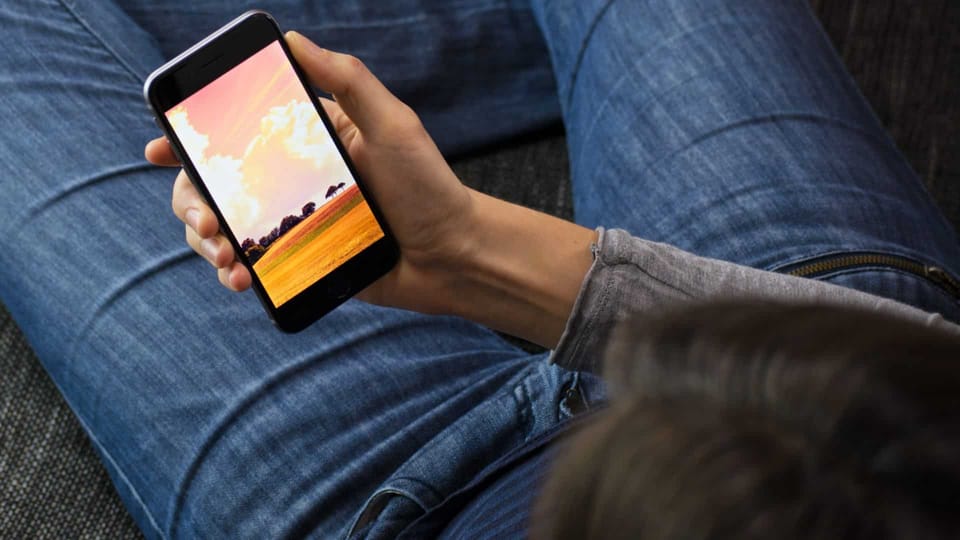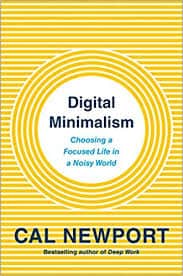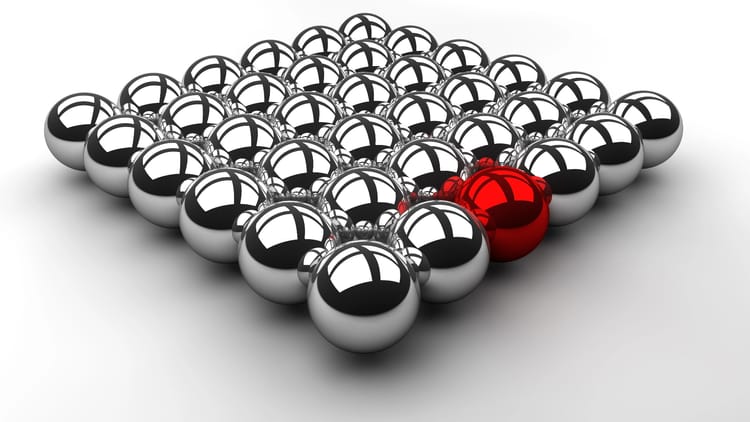Digital Minimalism

As I write this, I’m about to take off on a flight from Toronto to Orlando. That means — gasp — three hours without being connected to the Internet. There’s an out. For a small charge I can connect while cruising 30,000 feet in the air in case I need (or want) to stay connected.
It wasn’t so long ago that we lived without smart phones or even cell phones in our pockets and purses, and that screen time referred to our consumption of TV. Now many of us feel unsettled when we forget our phones at home. Half the people walking on the sidewalk seem to be focusing on the glowing rectangle in their hands rather than what’s around.
What is this doing to us, and how should we respond?
Foundations

In Digital Minimalism, Cal Newport raises the alarm about our constant online activity. “Many people I spoke to underscored social media’s ability to manipulate their mood,” he writes. We tend to overuse our electronic tools and lose autonomy, and we miss out on more valuable activities.
To counteract these negative effects, we employ modest hacks and tips like turning off notifications and practicing a digital sabbath. According to Newport, these don’t go far enough.
I’ve become convinced that what you need instead is a full-fledged philosophy of technology use, rooted in your deep values, that provides clear answers to the questions of what tools you should use and how you should use them and, equally important, enables you to confidently ignore everything else.
In Digital Minimalism, Newport begins by describing the power of the tools we use. They’ve been engineered to “control more and more of how we spend our time, how we feel, and how we behave.”
The solution, according to Newport, is to practice some basic principles: use technology for a specific purpose, and practice the “less is more” rule. Instead of making minor changes, Newport suggests that we take a 30-day break from all optional technologies in our life. At the end of 30 days, carefully reintroduce technologies from a blank slate. During the digital declutter, evaluate what’s important to you, and use this information to guide you as you reintroduce technology into your life.
Practices
Newport also suggests that we engage in new practices. For instance: Rediscover solitude. Leave your phone at home sometimes. Take long walks without your phone. Stop liking posts, and favor in-person interactions instead. Reclaim leisure. Delete social media from your phone.
The practices are built on the foundation. Don’t just jump to the practices. Instead, understand the influence that technology has on you, determine what you want to get out of it, and then build some good practices in your life.
Evaluation
I’m just finishing the 30-day digital declutter. I missed mindless surfing the first couple of weeks, but I quickly adjusted. I’ve deleted social media from my phone, and will keep it that way with the exception of two apps I need. It’s early, but I’ve enjoyed the results so far.
I enjoyed this book, although I found it funny that it’s written by someone who doesn’t seem to struggle with overusing technology. Maybe that’s valid. It’s also a longer book than it needs to be. I wonder if it could have been an extended article rather than an entire book.
Still, it carries an important message. We are shaped by powerful forces around us without even knowing it. One of the most powerful forces shaping us today is the smartphone. Newport helps us understand this. We’d better decide how our phones and social media will help us love God and serve others better, and then get shape our use of technology before it shapes us.
Our use of technology shapes our hearts, so we’d better learn to use it well.
More from Amazon.com






